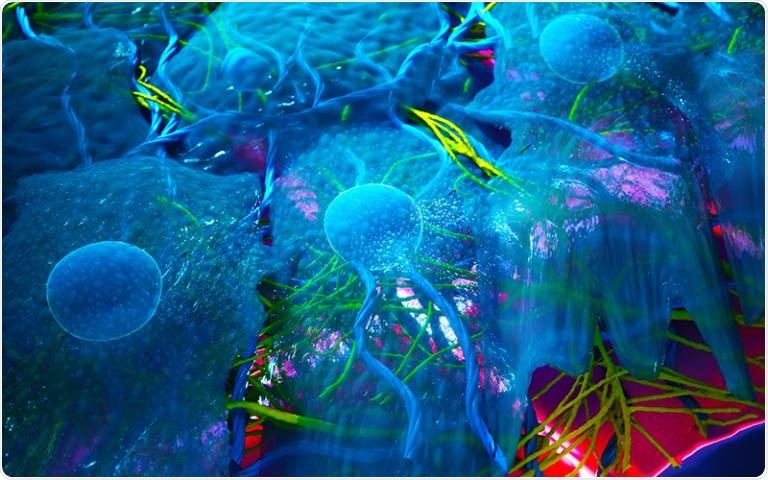According to recent research by UCL scientists, cells in the developing embryo sense the stiffness of other cells surrounding them, a vital factor that makes them move together to form the skull and face.

Image Credit: University College London.
During the investigation of frog embryos, the scientists identified that embryonic cells could move away from soft regions of the embryo and in the direction of harder regions. The study was published in the Nature journal.
Facial malformations and death occur in embryos where the cells are could not recognize hard regions from soft ones. The scientists state that this finding can help comprehend and evade harmful birth defects.
The features of human and animal faces, like the nose, lips, and ears, are sculpted by the complex and precise movement of cells in a developing embryo.”
Roberto Mayor, Study Lead Author and Professor, Cell & Developmental Biology, University College London
Professor Mayor added, “An error in the movement of these cells can have devastating consequences for the babies and their families, generating serious problems such as lip or palate cleft, facial palsy, cranial malformations, or even death.”
These account for a third of all birth defects globally—over 3 million each year—and are the primary cause of infant mortality, so improving our understanding of what causes such birth defects could be life-saving.”
Roberto Mayor, Study Lead Author and Professor, Cell & Developmental Biology, University College London
Researchers analyzing the neural crest—embryonic stem cells that develop into facial features—concentrated on the molecules and genes that regulate the movement of these cells. The progressing research headed by Professor Mayor indicates that along with genes and molecules, mechanical cues are also vital for the movement of these cells.
The novel research was carried out with frog embryos, as the neural crest cells of frog embryos behave akin to humans and their movement is mostly utilized to analyze the spread of cancer. Moreover, the embryo development of frogs can be examined without imposing harm.
Professor Mayor and coworkers earlier identified that the stiffening of embryonic cells precipitates the movement of neural crest cells to the front of the head to develop into the face. For the first time researchers identified how the cells can identify stiffness in their surrounding environment to travel along a stiffness gradient.
The scientists discovered a network of mechanical and chemical signals that interact to cooperatively regulate cell migration in the embryo. They discovered that neural crest cells triggered the stiffness gradient by depending on a protein familiar to be involved in cell-to-cell adhesion.
The cells sensed the gradient by interacting with the extracellular matrix (fibers surrounding cells). Thus, the cells could make their way towards stiffer regions of the embryo.
This newly identified behavior is likely to be found not only in the cells that form our face, but in the cells that form all our organs, and could play a central role in the dissemination of cancer cells during metastasis which hijacks the behavior. Understanding how these cells move is an important step toward developing therapies for craniofacial malformations and cancer progression.”
Dr Adam Shellard, Study Co-Author, Cell & Developmental Biology, University College London
Source:
Journal reference:
Shellard, A. & Mayor, R. (2021) Collective durotaxis along a self-generated stiffness gradient in vivo. Nature. doi.org/10.1038/s41586-021-04210-x.